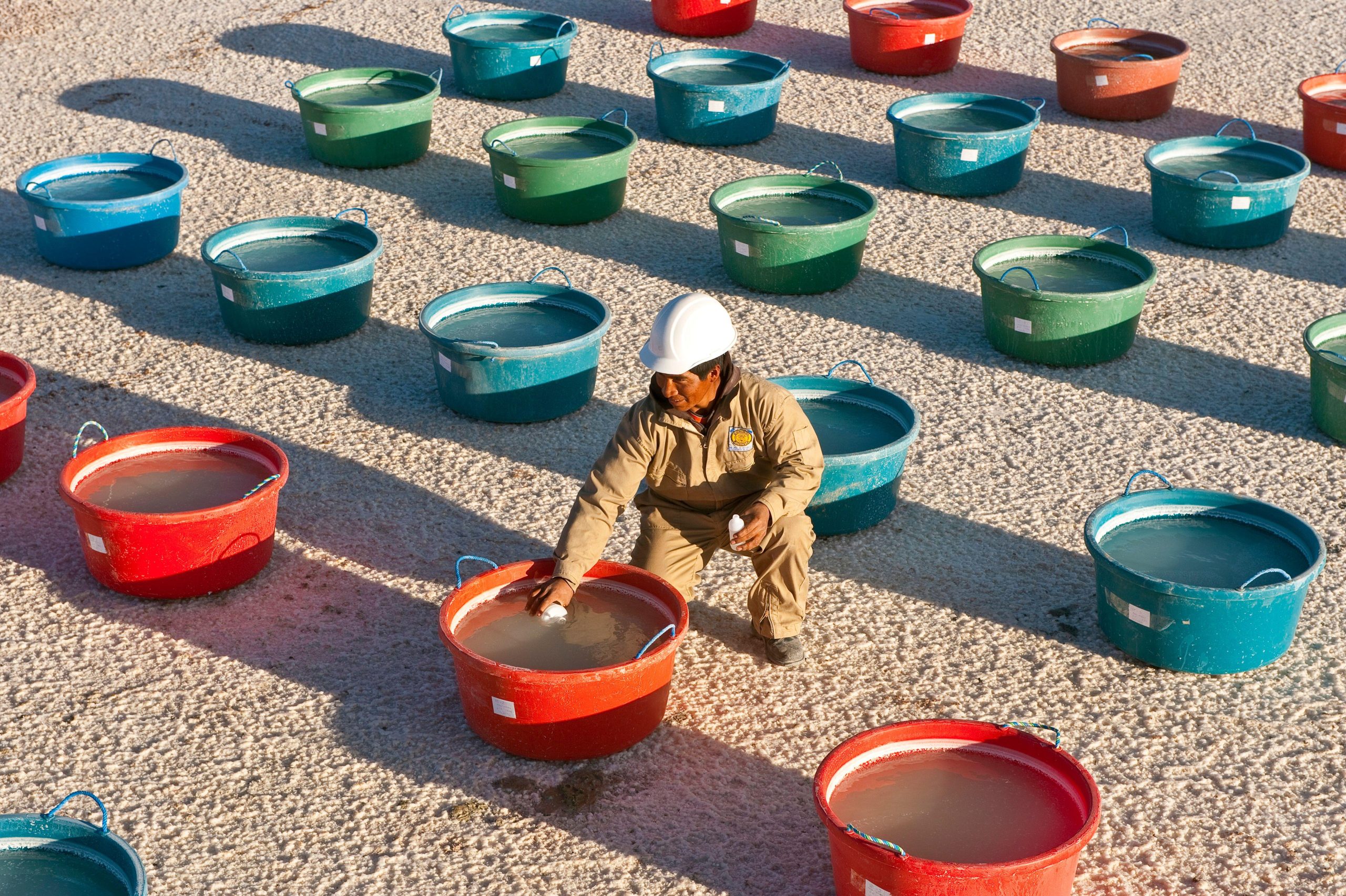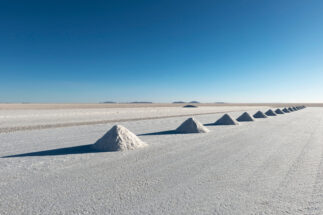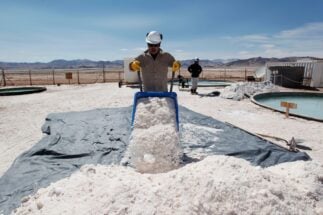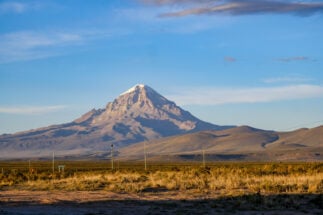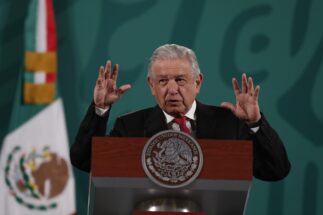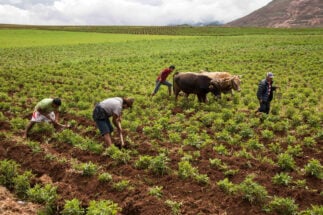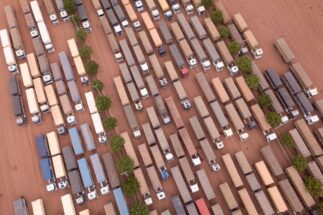“If you were to ask me which is the country of the future in the current context of lithium, we would give the same answer: Bolivia,” said Mexican political analyst Alfredo Jalife-Rahme at an academic discussion in La Paz this April, organised by the country’s Ministry of Hydrocarbons and Energy.
The professor, a specialist in geopolitics long associated with the National Autonomous University of Mexico (UNAM), was clear about the potential of the Andean country, which reportedly has identified lithium reserves of 21 million tonnes, mostly in the Salar de Uyuni, according to 2021 data from the United States Geological Survey.
Jalife-Rahme’s visit to Bolivia was not a casual one. At the event, he reinforced the idea of maintaining state control over industrialisation, almost a year after the Bolivian government relaunched its strategy to export value-added lithium, including at two additional salt flats beyond the better known Uyuni: Pastos Grandes, in the department of Potosí, and Coipasa, in neighbouring Oruro.
If you were to ask me which is the country of the future in the current context of lithium, we would give the same answer: Bolivia
In a country where state control over lithium and other natural resources has long been prioritised, particularly under the former government of Evo Morales, last year’s strategy saw a slight break towards an international call for proposals to work with foreign private companies that use direct lithium extraction (DLE) methods. Gonzalo Mondaca, a researcher at the Bolivian Centre for Documentation and Information (CEDIB), describes DLE as “a set of technologies that use absorbent resins, solvents and other materials such as filters or special membranes to accelerate the mineral extraction process.”
In this context, Jalife-Rahme told the gathered audience of around 500 people that, “Lithium must be defended. You must have plans, because you are going to have a lot of vultures around.”
New process, new questions
Last June, the names of the six companies and partnerships in the running to work with Yacimientos de Litio Boliviano (YLB) – the state company responsible for the resource’s exploitation – became known, with particular interest from China.
They are: Brunp, a subsidiary of battery maker CATL, alongside China Molybdenum (CMOC); the CITIC Guoan Group, together with the China Railway International Group (CRIG); the Xinjiang TBEA Group; and Fusion Enertech, also from China. The United States’ Lilac Solutions and Russia’s Uranium One Group make up the list.
“The next step is to meet with the companies to present our sovereign conditions regarding lithium,” said YLB president Carlos Ramos, adding that it could work with more than one firm in order to accelerate industrialisation.
The technology for production currently used at Uyuni, which consists of solar evaporation, will allegedly be obsolete within 40 years, with “40% of the equipment that is important in industrialisation” set to be lost, according to former president of YLB Marcelo Gonzales, cited in a 2021 report by CEDIB researcher Mondaca.
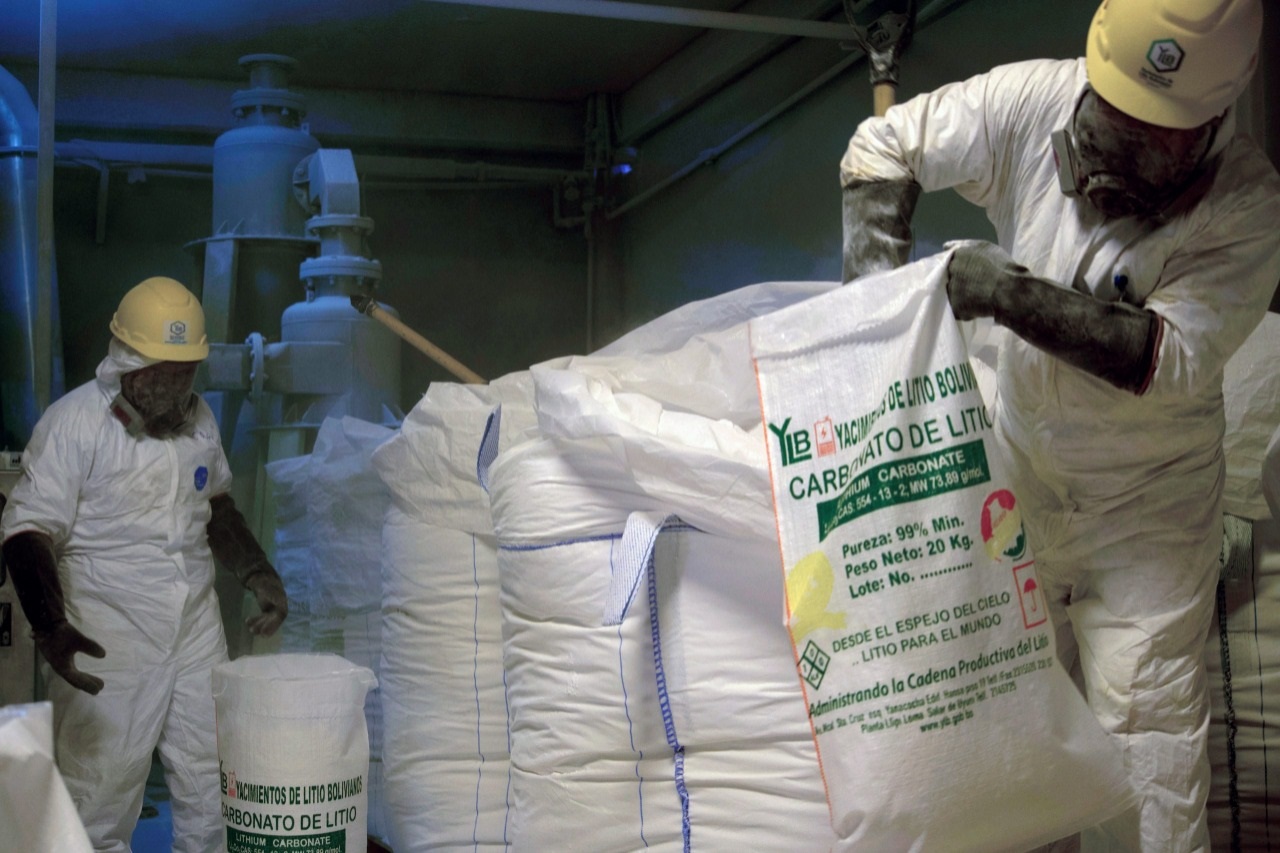
From a technical point of view, Juan Carlos Zuleta, a lithium economics analyst and former executive manager of YLB, explains that while it is known what type of samples were given to the companies for evaluation, it is not known at what stage of the solar evaporation process their reported potential lithium recovery rates were calculated, nor the overall efficiency of each firm.
Zuleta raises questions over which stage DLE technologies would be applied to the existing infrastructure in the Salar de Uyuni. “If it is done in the first phase of extraction, this affects the raw material to be used in the industrial potassium chloride plant,” he highlights. On the other hand, if the mineral is extracted in later phases, the possibility of having residual brine, which is used in the processing of lithium hydroxide – the main element for the production of battery cathodes – is eliminated.
In this context, DLE technologies would have to be applied using a hybrid model, consisting of the use of brine extracted at some stage during the solar evaporation process. If so, based on experiences such as those of China, where such a hybrid system has been in use since 2017, Zuleta notes that total lithium recovery rates would not exceed 59%. This contradicts what was stated by the president of YLB, who had announced that the six selected companies reported a lithium recovery rate “higher than 80% and even higher than 90% in some cases”.
Regarding the extraction and processing of lithium and other evaporite resources in the Pastos Grandes and Coipasa salt flats, included in the new Bolivian strategy, “we would have to think about [building] new infrastructure, with costs that are around 900 million to 1 billion dollars, according to data I obtained from a [similar] project that is underway in Argentina,” said Zuleta.
The Ministry of Hydrocarbons and Energy did not respond to requests for information on the government’s position on the issue.
A long history
Bolivian efforts to exploit lithium date back more than three decades. They are closely linked to the social struggle of the people of Potosí, the mining region par excellence since colonial times, to improve the quality of life of its inhabitants. The department, located in the south of the country, generates one of its larger sources of income – nearly US$2 billion in exports each year, with 88% coming from mining in 2021 – but paradoxically has the highest poverty rates, according to data from the UN Economic Commission for Latin America and the Caribbean (ECLAC).
“We who are the owners [of the minerals] are left with poverty and pollution,” said Roxana Graz, president of the Potosí Civic Committee (COMCIPO), the body that represents civil society institutions and is leading protests in the region, demanding more attention from the government. The most recent was a blockade and strike, which took place mainly in the provincial capital, also named Potosí, on 5 July.
We who are the owners of the minerals are left with poverty and pollution
Graz’s assessment relates to attempts by various Bolivian governments since the 1980s to sign contracts with foreign companies, which almost always have economic disadvantages, according to a study entitled “A present without a future: The lithium industrialisation project in Bolivia”. The most recent attempt was in 2019, when the government of Evo Morales chose to cancel contracts with firms from Germany (ACI Systems) and China (Xinjiang TBEA), due to protests in Potosí demanding royalties and better conditions for the country. The now ex-president even attributes his overthrow to foreign interest in controlling the mineral.
As a result of constant demands and in order to maintain control of lithium and other mineral resources, laws such as the Mining Law (2014) and the Law for the Creation of Bolivian Lithium Deposits – YLB (2017) were modified and enacted, which make it clear that all extraction and industrialisation processes must be in the hands of the state. But this intention has not been enough to achieve success.
In 2008, during the Morales presidency, Bolivia made a foray into lithium industrialisation with a US$771 million loan from the Central Bank of Bolivia, according to the Fundación Solón, a Bolivian NGO. Currently, the country has a potassium chloride industrial plant, which cost the state US$188.1 million, and a lithium carbonate industrial plant is under construction – also state-funded to the tune of US$110 million – which is expected to be completed soon. Both are located in the Uyuni salt flat.
In an interview with state media, the vice-minister of high energy technologies, Álvaro Arnez, said that around 990 tonnes of lithium carbonate were produced and sold in 2021, for which 75 million bolivianos (around US$11 million) was received, adding that lithium production is growing in the country.
Lithium carbonate is a key raw material for the manufacture of batteries for electronic equipment, including electric vehicles. Potassium chloride, meanwhile, is one of the components of NPK, a fertiliser made up of nitrogen, phosphorus and potassium.
Bolivia in the eyes of the world
Diego Von Vacano is a Bolivian professor of political science at Texas A&M University in the United States. As a former informal advisor to President Luis Arce on lithium issues, he welcomes the fact that companies from three countries – China, Russia and the US – with different political ideologies are involved in this new bidding process with DLE technologies. However, he warns that this coincides with a geopolitical context marked by the war between Russia and Ukraine and that “complicates the landscape”.
In the case of signing with the Russian company, this could affect broader markets. “I think Bolivia should have some kind of agreement with Russia, but I’m not so sure that lithium is the right area,” he tells Diálogo Chino.
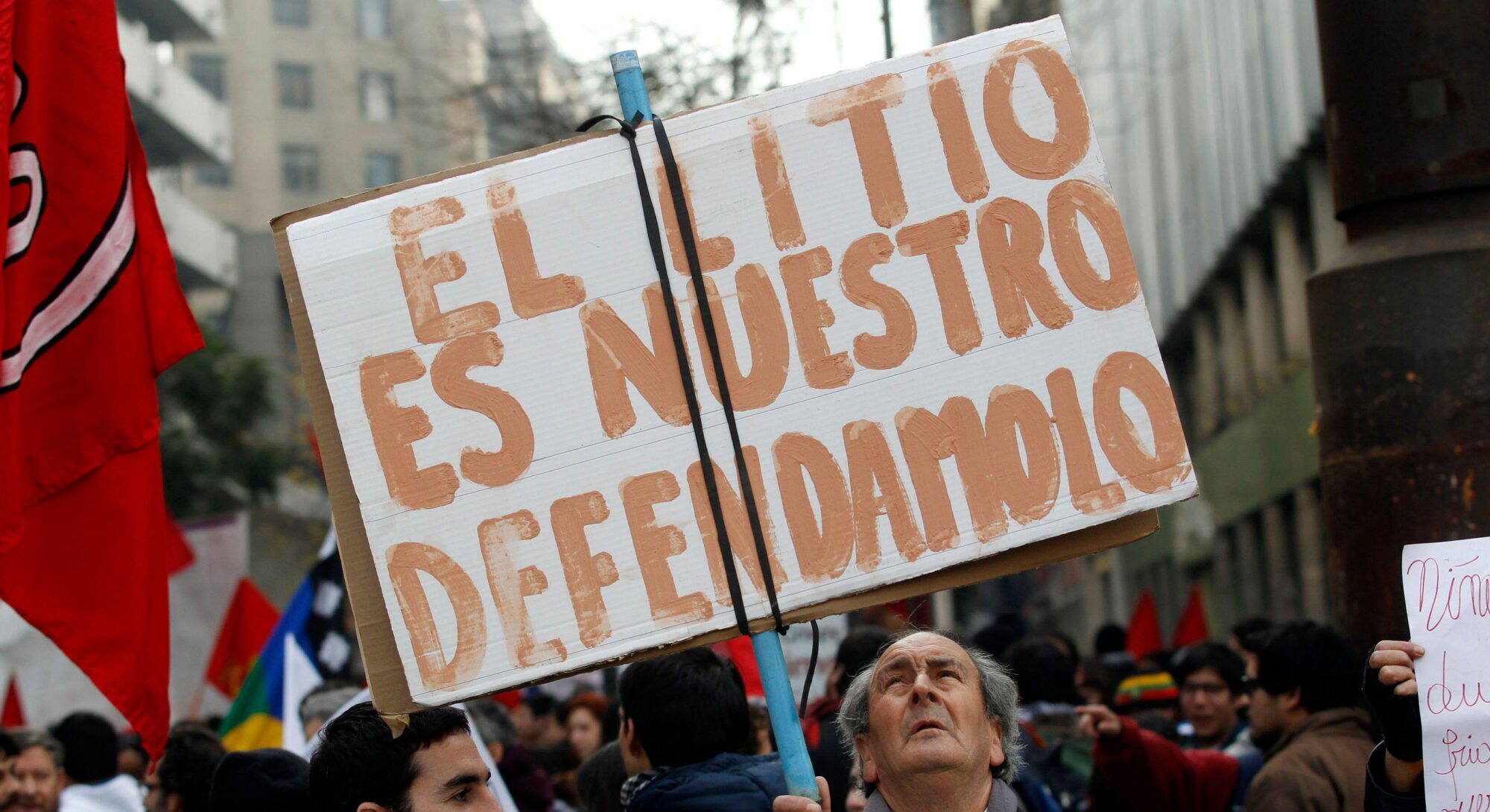
Regarding Chinese companies’ interest, Von Vacano adds that China controls almost the entire global lithium market. “We should be careful that [Chinese companies] are not in Bolivia just to control the world price,” he says. The United States does not have a positive record in Latin America either, the professor adds, and says the company that is in the running, Lilac Solutions, “is not big, does not have much experience or clear results”. Its effectiveness with DLE technologies has been called into question, as a recent Reuters report highlighted.
Away from the global dimensions of discussions, Roxana Graz, the leader representing the people of Potosí, laments the sluggishness of the first 14 years of the industrialisation process, and is cautious about the prospects ahead. “Now they want to do it quickly [through DLE], but without knowledge or information. They have done everything top secret and have spent a lot of money,” says Graz, who also asserts that “the fight for Bolivia’s natural resources is now”.
